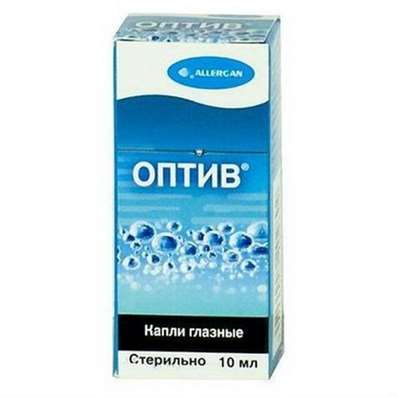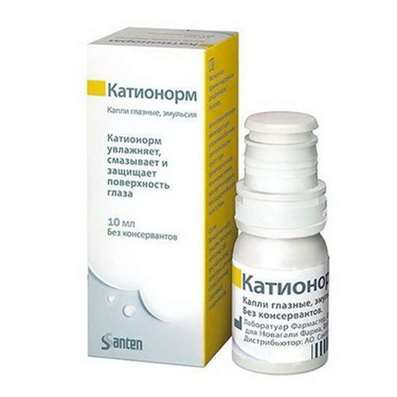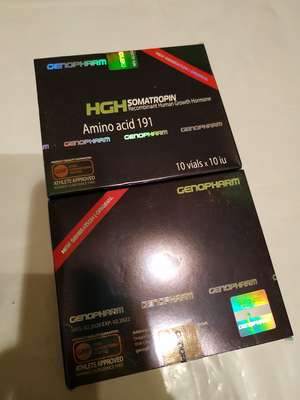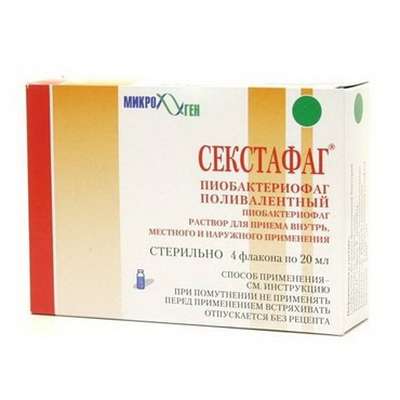Instruction for use: Glencet
I want this, give me price
Dosage form: Film-coated tablets
Active substance: Levocetirizinum*
ATX
R06AE09 Levocetirizine
Pharmacological groups:
Antiallergic agent - H1-histamine receptor blocker [H1-antihistamines]
The nosological classification (ICD-10)
H04.9 Illness of lacrimal apparatus, unspecified: Insufficient production of tear fluid; Insufficient lacrimation; Red eye syndrome; Lachrymation; Dryness of the anterior surface of the eye
H10.1 Acute atopic conjunctivitis: Allergic conjunctivitis; Allergic eye diseases; Allergic conjunctivitis; Allergic conjunctivitis caused by chemical and physical factors; Allergic rhinoconjunctivitis; Allergic inflammation of the eyes; Spring Qatar; Spring keratitis; Spring conjunctivitis; Conjunctivitis allergic; Year-round allergic conjunctivitis; Exacerbation of pollinosis in the form of rhinoconjunctival syndrome; Acute allergic keratoconjunctivitis; Acute allergic conjunctivitis; Superficial bacterial infection of the eyes; Rhinoconjunctivitis; Seasonal allergic conjunctivitis; Seasonal conjunctivitis; SENSORY; Chronic allergic keratoconjunctivitis; Chronic allergic conjunctivitis
H11.4 Other conjunctival vascular diseases and cysts: Edema of the conjunctiva; Secondary hyperemia of the eye; Hyperemia of the conjunctiva; Hyperemia of the membranes of the eye
J00 Acute nasopharyngitis [rhinitis]: Viral rhinitis;Inflammation of the nasopharynx; Inflammatory Nose Disease; Purulent rhinitis; Nasal congestion; Nasal congestion due to cold and flu; Difficulty with nasal breathing; Difficulty with nasal breathing for colds; Difficult nasal breathing; Difficult nasal breathing for colds; Nasal hypersecretion; Coryza; ARI with phenomena of rhinitis; Acute rhinitis; Acute rhinitis of various origins; Acute rhinitis with thick purulent-mucous exudate; Acute rhinopharyngitis; Edema of the mucous membrane of the nasopharynx; Rhinitis; Rhinorrhea; Infectious-inflammatory disease of ENT organs;Severe cold; Rhinopharyngitis
J30 Vasomotor and allergic rhinitis: Allergic rhinopathy; Allergic rhinosinusopathy; Allergic diseases of the upper respiratory tract; Allergic rhinitis; Allergic rhinitis seasonal; Vasomotor runny nose; Prolonged allergic rhinitis; All-year-round allergic rhinitis; All-year allergic rhinitis; Year-round or seasonal allergic rhinitis; All-the-year-round rhinitis of an allergic nature; Rhinitis vasomotor allergic; Exacerbation of pollinosis in the form of rhinoconjunctival syndrome; Acute allergic rhinitis; Edema of the nasal mucosa; Edema of the nasal mucosa; Edema of the mucous membrane of the nasal cavity; Swelling of the nasal mucosa; Swelling of the nasal mucosa; Pollinosis; Permanent allergic rhinitis; Rhinoconjunctivitis; Rhinosinusitis; Rhinosinusopathy; Seasonal allergic rhinitis; Seasonal allergic rhinitis; Hay rhinitis; Chronic allergic rhinitis; Allergic diseases of the respiratory tract
J30.1 Allergic rhinitis caused by pollen of plants: Hay fever; Hay fungus; hay fever; Hypersensitivity to pollen of plants; Polyposis allergic rhinosinusitis; Seasonal pollinosis; Seasonal rhinitis
L20 Atopic dermatitis: Allergic diseases of the skin; Allergic skin disease noninfectious etiology; Allergic skin disease etiology nemikrobnoy; Allergic skin diseases; Allergic skin lesions; Allergic reactions on the skin; atopic dermatitis; Allergic dermatosis; Allergic diathesis; Allergic itching dermatosis; Allergic skin disease; Allergic skin irritation; allergic Dermatitis; atopic Dermatitis; allergic dermatoses; exudative diathesis; Itchy atopic eczema Itchy allergic dermatosis; Allergic skin disease; Cutaneous allergic reaction to drugs and chemicals; Cutaneous reactions to medications; Skin and allergic disease; Acute eczema; common neurodermatitis; Chronic atopic dermatitis; Exudative diathesis
L29 Itching: Itching with partial obstruction of the biliary tract; Dermatitis itchy; Dermatosis with persistent itching; Other itching dermatoses; Itching dermatoses; Itching allergic dermatosis; Itching dermatitis; Itching dermatosis; Itching itch; Excruciating itching; Severe itching; Endogenous itching; Skin itching with dermatosis; Restricted itchy dermatitis; Itching of the skin; Itchy scalp; Itching eczema
L29.8 Other itching: Itching of the eye; Itching of the conjunctiva; Itching of the palate; Itching of the nose; Itching of the nasal mucosa; Itchy syringe; Itchy pruritus
L50 Urticaria: Idiopathic chronic urticarial; Injury Urticaria; Chronic urticarial; Hives of the newborn
L50.1 Idiopathic urticaria: Idiopathic urticarial; Chronic idiopathic urticaria
R06.7 Sneezing: Sneezing
R21 Rash and other nonspecific skin rashes: Skin rash; Skin and mucous eruptions; Skin rashes; Drug rash; Medicinal rash fixed; Dry skin rashes; Rash; Toxidermy; Toxicoderma; Toxic rash; Korepodobnye rashes from drugs; Macular Papular Eruptions; Drug-induced rash
T78.3 Angioedema: Edema Quincke; Laryngeal exacerbation with angioneurotic edema; Recurrent angioedema; Allergic edema; Recurrent swelling of Quincy
Composition
Tablets covered with a film coating.
active substance: Levocetirizine dihydrochloride 5 mg
Auxiliary substances: lactose monohydrate (Tabletose 100); MCC (Avicel PH 112); Silicon dioxide colloid (aerosil 200); Magnesium stearate
Film sheath: Opadry white Y-1-7000 (hypromellose 5cP, titanium dioxide, macrogol 400 (polyethylene oxide 400)
Description of dosage form
Tablets: white biconvex ovate, covered with a film membrane, on one side there is a fault line with an engraving "G" on either side of it, the other side is smooth.
Pharmachologic effect
Mode action - antiallergic, antipruritic, antiexudative, H1-antihistamine.
Pharmacodynamics
Levocetirizine - (R) -enantiomer of cetirizine, a competitive histamine antagonist, blocks H1-histamine receptors, whose affinity is two times higher than that of cetirizine. It affects the histamine-dependent stage of allergic reactions, reduces the migration of eosinophils, vascular permeability, and limits the release of inflammatory mediators. Prevents development and facilitates the course of allergic reactions, has an antiexudative, antipruritic effect, has almost no anticholinergic and antiserotonin effect. In therapeutic doses, the sedative effect is very poorly expressed. The action begins 12 minutes after a single dose in 50% of patients, after 1 hour - in 95% and lasts for 24 hours. Does not affect the QT interval on the ECG.
Pharmacokinetics
Pharmacokinetics is linear in nature, independent of dose and time, and varies insignificantly among different people.
Absorption. Quickly absorbed when taken orally; Food intake does not affect the fullness of absorption, but reduces its speed. Bioavailability of 100%. Tmax - 0.9 h, Cmax in the blood - 207 ng / ml. Vd - 0,4 l / kg. The degree of absorption depends on the dose and is not disturbed by eating, but when you eat Cmax decreases and slows down its achievement.
Distribution. Levocetirizine binds to plasma proteins by 90%. Data on the distribution of levocetirizine in tissues and its penetration through the BBB in humans are absent. Levocetirizine penetrates into breast milk.
Metabolism. In humans, less than 14% of the dose of levocetirizine is metabolized; The expected differences in the pharmacokinetic profile of levocetirizine due to genetic polymorphism or simultaneous administration of enzyme inhibitors are negligible. Metabolic transformations consist in oxidation of the aromatic ring, N- and O-dealkylation, and conjugation with taurine. The dealkylation process is mainly carried out with the CYP3A4 isoenzyme, while the oxidation of the aromatic ring is carried out by many and / or unidentified CYP isoforms. Levocetirizine when administered orally at a dose of 5 mg and / or excess of Cmax in blood plasma does not affect the activity of CYP isoenzymes 1A2, 2C9, 2C19, 2B6, 2E1, 3A4. Due to limited metabolism and the absence of metabolic inhibitory activity, the interaction of levocetirizine at the metabolic level with other substances is unlikely.
Excretion. T1 / 2 - 7-10 hours. The total clearance is 0.63 ml / min / kg. Completely eliminated from the body for 96 hours, mainly with urine (85.4% of the dose).
Renal insufficiency. The total clearance of levocetirizine depends on the creatinine clearance, therefore, patients with moderate and severe renal insufficiency are recommended to increase the intervals between doses of the drug in accordance with the creatinine clearance. In patients with anuria and terminal stage of renal failure, the total clearance of levocetirizine is reduced by approximately 80% compared to that in healthy people. The amount of levocetirizine withdrawn with a standard 4-hour hemodialysis procedure is less than 10%.
Indications of the Glencet
Symptomatic treatment of the following conditions and diseases:
Year-round and seasonal allergic rhinitis and allergic conjunctivitis (itching, sneezing, rhinorrhea, lacrimation, congestion hyperemia);
Hay fever (hay fever);
Urticaria, incl. Chronic idiopathic;
Angioedema;
Other allergic dermatoses, accompanied by itching and rashes.
Contraindications
Hypersensitivity to levocetirizine, drug components, piperazine derivatives;
Severe chronic renal failure (Cl creatinine less than 10 mL / min);
Intolerance to galactose, deficiency of lactase and glucose-galactose malabsorption;
pregnancy;
Lactation period;
Children's age till 6 years.
With caution: spinal cord injury; Hyperplasia of the prostate, as well as the presence of other predisposing factors to urinary retention, since levocetirizine may increase the risk of urinary retention; Chronic renal failure with Cl creatinine more than 10 ml / min, but less than 50 ml / min (dosage adjustment is required); Elderly age (glomerular filtration may be decreased); Simultaneous use of alcohol (see "Interaction").
Application in pregnancy and breastfeeding
The use of the drug in pregnancy is contraindicated.
Levocetirizine is excreted in breast milk, so if it is necessary to use the drug in lactation it is recommended to stop breastfeeding.
Side effects
Side effects of levocetirizine are divided according to the system-organ classes according to the classification of the Medical Dictionary of Regulatory Activities (MedDRA) with the frequency of their occurrence: often (≥1 / 100 and <1/10); Infrequently (≥1 / 1000 and <1/100); Very rarely (<1/10000).
From the side of the immune system: very rarely - hypersensitivity reactions, incl. Anaphylactic reactions.
From the side of metabolism and eating disorders: the frequency is unknown - increased appetite.
From the nervous system: often - headache; Infrequently - drowsiness; Rarely - dizziness; Very rarely - aggression, agitation, hallucinations, depression, convulsions; Frequency unknown - insomnia, thrombosis of the dura mater, paresthesia, fainting, anxiety, tremor, dysgeusia, suicidal thoughts.
From the side of the hearing organ: the frequency is unknown - the vertigo.
From the side of the organ of vision: frequency is unknown - indistinctness of visual perception, inflammatory manifestations.
From the CVS: very rarely - a feeling of palpitations, tachycardia; Frequency unknown - thrombosis of the jugular vein, stenocardia.
From the respiratory system, chest and mediastinal organs: very rarely - shortness of breath; Frequency unknown - increased symptoms of rhinitis.
From the gastrointestinal tract: often - dryness of the oral mucosa; Infrequently - pain in the abdomen; Very rarely - nausea, diarrhea; Frequency is unknown - vomiting.
From the kidneys and urinary system: the frequency is unknown - dysuria, urinary retention.
From the liver and biliary tract: very rarely - hepatitis.
From the skin and subcutaneous tissues: very rarely - angioedema, itching, rash, including a rash, hives; Frequency is unknown - hypotrichosis, cracks, photosensitivity.
From the musculoskeletal and connective tissue: very rarely - myalgia.
Common violations: often - fatigue; Infrequently - asthenia; Frequency unknown - peripheral edema.
From laboratory and instrumental data: very rarely - a violation of liver function indicators, weight gain.
If any of the side effects listed in the manual are aggravated or the patient has noticed any other side effects not listed in the instructions, you should inform your doctor.
Interaction
The interaction of levocetirizine with other drugs has not been studied.
Studies of the interaction of the racemate cetirizine showed no clinically significant interaction with pseudoephedrine, cimetidine, ketoconazole, erythromycin, azithromycin, glipizide, and diazepam.
Theophylline (400 mg / day) reduces the total clearance of cetirizine by 16%, while the kinetics of theophylline does not change.
With the simultaneous administration of ritonavir (600 mg twice daily) and cetirizine (10 mg per day), the exposure of cetirizine increases (40%), and the exposure of ritonavir varies insignificantly.
The degree of absorption of cetirizine does not decrease under the influence of food, although the rate of absorption decreases.
In a number of cases, with the simultaneous use of levocetirizine with ethanol or drugs that have an inhibitory effect on the central nervous system, it is possible to intensify this action.
Dosing and Administration
Inside, not liquid and squeezed liquid, regardless of food intake. It is recommended to take a daily dose at one time.
Adults, teenagers and children over 6 years. The recommended daily dose is 5 mg (1 table).
Patients of advanced age. In elderly patients with moderate and severe renal failure, dose adjustment is recommended (see Impairment of kidney function below).
Impaired renal function. The interval between doses is determined individually, taking into account the function of the kidneys. Information on dose adjustment is given in the table below. For its use, the creatinine clearance in the patient (in ml / min) based on serum creatinine concentration (mg / dl) should be calculated using the following formula: Cl creatinine = (140 - age, years) × mass, kg / 72 × creatinine Blood serum, mg / dl (× 0.85 for women).
Table 1
Correction of dose in patients with impaired renal function
| Group | Clcreatinine, ml/min | Dose and multiplicity of admission |
| Normal function | ≥80 | 5 mg 1 per a day |
| Easy CRF | 50–79 | 5 mg 1 per a day |
| Moderate CRF | 30–49 | 5 mg 1 per in 2 days |
| Severe CRF | <30 | 5 mg 1 per in 3 days |
| Terminal CRF - patients on dialysis | <10 | Contradicted |
In children with impaired renal function, the dose is adjusted individually, taking into account the clearance of creatinine and body weight. There are no separate data for use in children with impaired renal function.
Violation of the function of the liver. With an isolated violation of liver function, dose adjustment is not required. In patients with hepatic renal failure, dose adjustment is recommended (see Abnormal kidney function above).
Duration of treatment
There is a clinical experience of the continuous use of levocetirizine for up to 6 months in adult patients.
In the treatment of seasonal (intermittent) allergic rhinitis (the presence of symptoms less than 4 days per week or a total duration of less than 4 weeks), the duration of treatment depends on the duration of the symptomatology; Treatment can be stopped if symptoms disappear and are resumed when symptoms appear.
In the treatment of year-round (persistent) allergic rhinitis (the presence of symptoms more than 4 days a week and their total duration of more than 4 weeks) treatment can continue throughout the exposure period of allergens.
The course of treatment is determined by a doctor; The average is 1-6 weeks.
In chronic diseases (including chronic idiopathic urticaria), the course of treatment can be longer in agreement with the doctor.
Overdose
Symptoms: drowsiness in adults and agitation, as well as anxiety, followed by drowsiness, in children.
Treatment: there is no specific antidote to levocetirizine. Symptomatic or maintenance treatment is recommended. If you take a little time after taking the medication, you should wash the stomach. Levocetirizine is practically not excreted in hemodialysis.
Special instructions
During treatment with the drug is not recommended to take ethanol.
Influence on the ability to drive vehicles and work with machinery. It is necessary to refrain from driving vehicles and practicing other potentially dangerous activities that require an increased concentration of attention and speed of psychomotor reactions.
Release form
Tablets, film-coated, 5 mg. In a strip made of aluminum foil, 7, 10 or 14 pcs. In a blister of white opaque PVC / PVDH-aluminum foil, 7, 10 or 14 pcs. 1, 2 or 5 strips, or 1, 2 or 5 blisters in a cardboard bundle.
Manufacturer
Glenmark Pharmaceuticals Ltd., India.
Name and address of the legal entity in whose name the registration certificate was issued: Glenmark Pharmaceuticals Ltd., India.
Claims of consumers should be sent to the address of Glenmark Impex LLC: 115114, Moscow
Conditions of leave from pharmacies
Without recipe.
Storage conditions of the drug Glencet
In a dry, the dark place at a temperature of no higher than 30 ° C.
Keep out of the reach of children.
Shelf life of the drug Glencet
3 years.
Do not use after the expiry date printed on the package.

 Cart
Cart





